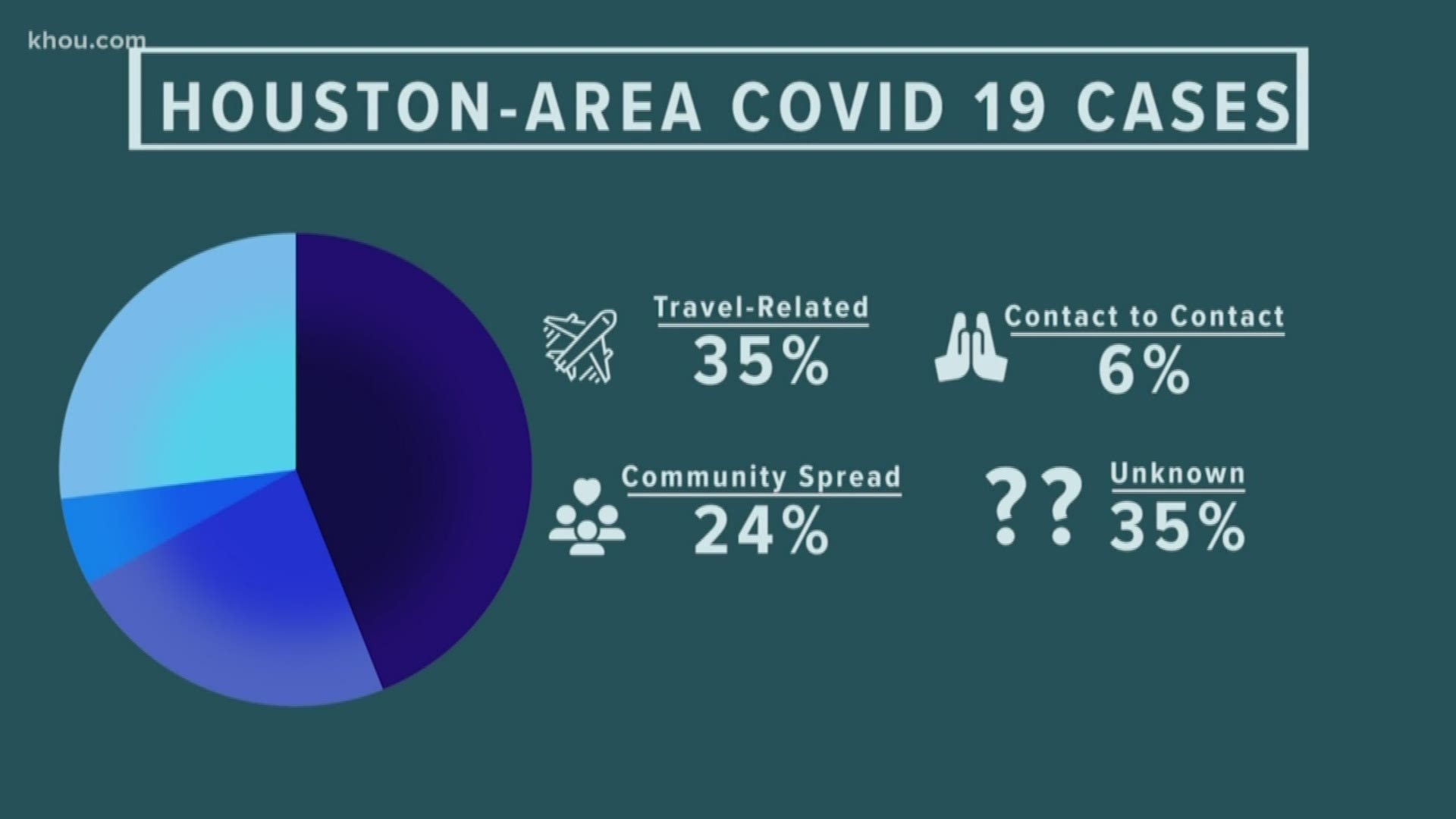A closer look at the number of positive COVID-19 cases in the greater Houston area reveals neither the very old, nor the very young are testing positive the most.
It’s been 20 days since the first positive case was reported, and as of 4 p.m. Tuesday, local health departments confirm a total of more than 250 cases in Harris and 10 surrounding counties.
So far, people in their 60s or older make up 17% of positive cases in the area.
Those in their 40s and 50s more than double that, with 38%.
As for folks in their 80s and 90s, four have tested positive. Two of them died.
“That’s why we cannot let people think that this is just one category of individuals,” said Dr. Umair Shaw, Harris Health executive director. “This is all of us in our community who are at risk.”
Overall, more men have tested positive than women, 43% compared to 37%. Health officials did not disclose the gender in 20% of cases.
Travel-related cases, 35%, outpace community-spread cases, 24%. Cases where someone came in contact with another positive-case person make up 6% of the overall numbers. In 35% of cases, local health departments did not report an origin.
As testing expands to more of the population, health officials said the patterns will likely shift over time.
“The important thing is that anyone of us can become infected, which means any of us once infected can spread it to our loved ones,” said Dr. David Persse with the Houston Health Department.
But with all the anxiety also comes context and perspective to the numbers. Harris County for example, has 0.29 cases per 10,000 residents.
The highest rate, in Matagorda County, is at 1.6 cases per 10,000 people.
RELATED: Coronavirus updates: Fort Bend County issues ‘Stay Home to Save Lives’ order | Effective midnight
RELATED: Coronavirus: Gov. Abbott orders hospitals to submit daily reports on bed capacity, COVID-19 testing
Coronavirus symptoms
The symptoms of coronavirus can be similar to the flu or a bad cold. Symptoms include a fever, cough and shortness of breath, according to the Centers for Disease Control.
Most healthy people will have mild symptoms. A study of more than 72,000 patients by the Centers for Disease Control in China showed 80 percent of the cases there were mild.
But infections can cause pneumonia, severe acute respiratory syndrome, kidney failure and even death, according to the World Health Organization. Older people with underlying health conditions are most at risk.
The CDC believes symptoms may appear anywhere from two to 14 days after being exposed.
Human coronaviruses are usually spread through...
- The air by coughing or sneezing
- Close personal contact, such as touching or shaking hands
- Touching an object or surface with the virus on it, then touching your mouth, nose or eyes before washing your hands.
Help stop the spread of coronavirus
- Stay home when you are sick.
- Eat and sleep separately from your family members
- Use different utensils and dishes
- Cover your cough or sneeze with your arm, not your hand.
- If you use a tissue, throw it in the trash.
Lower your risk
- Wash your hands often with soap and water for at least 20 seconds. If soap and water are not available, use an alcohol-based hand sanitizer.
- Avoid touching your eyes, nose, and mouth with unwashed hands.
- Avoid close contact with people who are sick.
- Clean and disinfect frequently touched objects and surfaces.
- If you are 60 or over and have an underlying health condition such as cardiovascular disease, diabetes or respiratory illnesses like asthma or COPD, the World Health Organization advises you to try to avoid crowds or places where you might interact with people who are sick.
Get complete coverage of the coronavirus by texting 'FACTS' to 713-526-1111.

